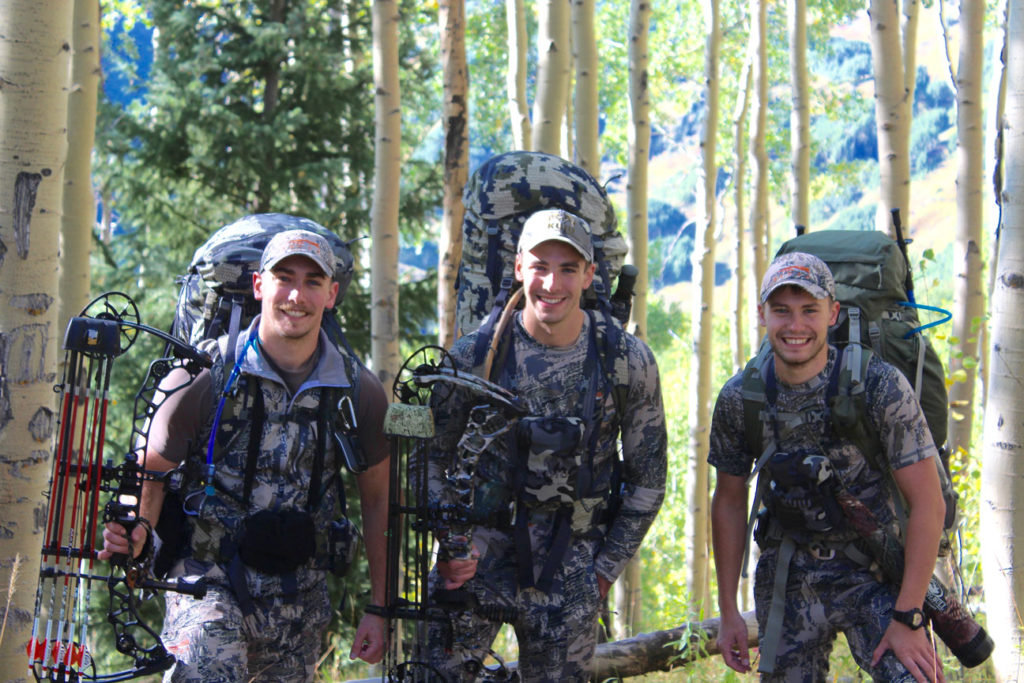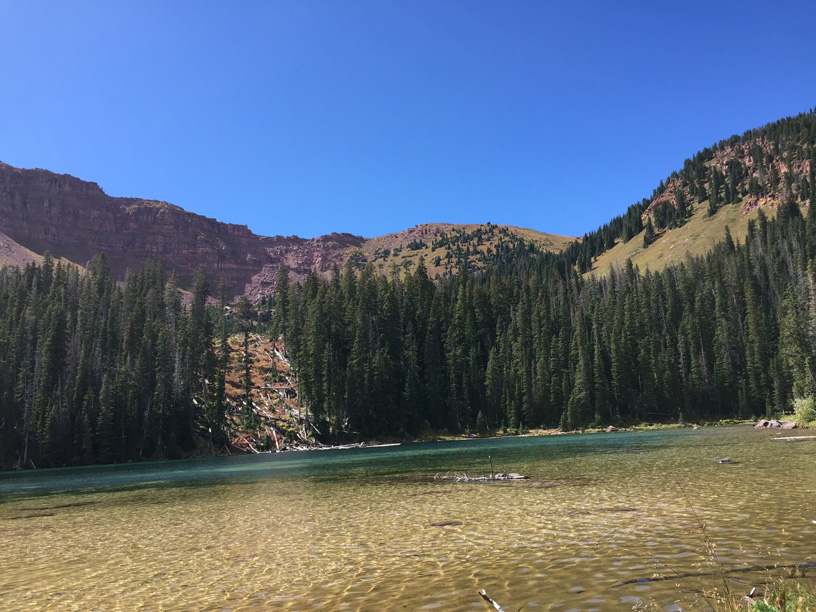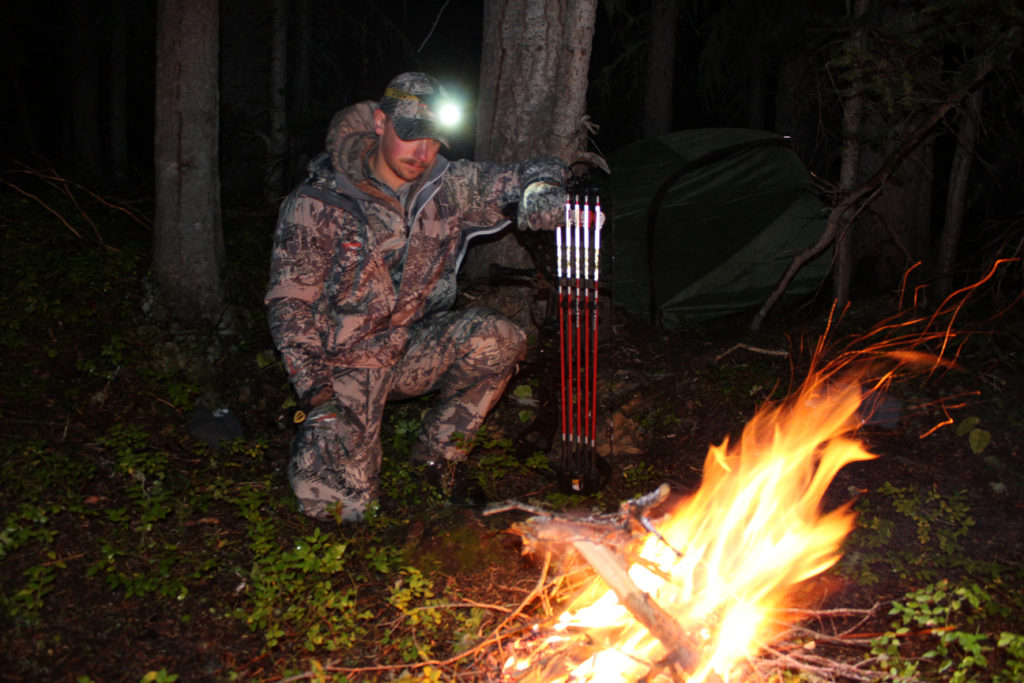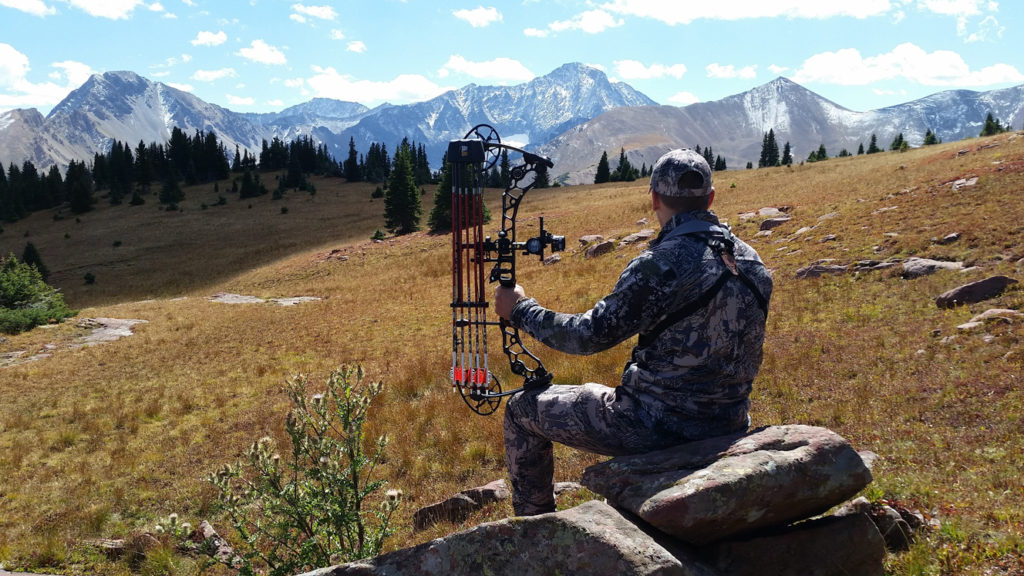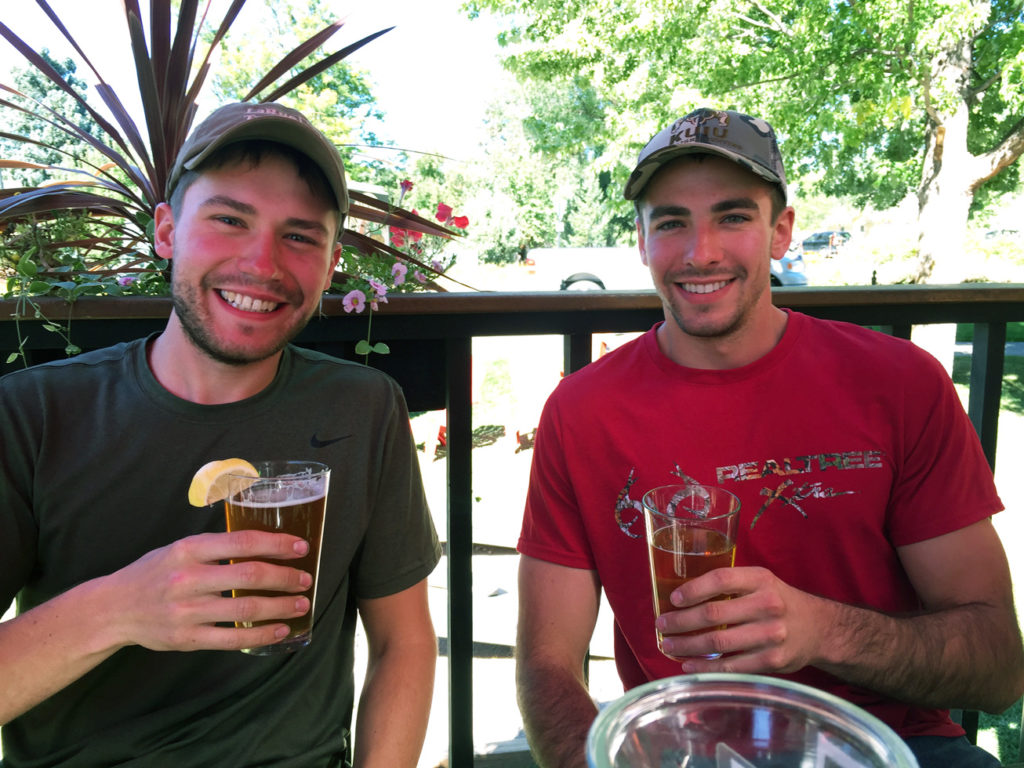BACKGROUND
For my entire life, I’ve been a hunter. I became hooked on bowhunting from the beginning, and would do anything to be a great archery hunter like my Dad. As I grew through my teens and early twenties, bowhunting became my life. I’ve grown up hunting white-tailed deer, turkey, coyotes, and whatever else was in-season in northern Pennsylvania at the time. The area of northern Pennsylvania that I grew up in is located smack in the middle of the Allegheny National Forest. This setting isn’t typical for most whitetail hunters. The area is mountainous, thick, and without any semblance of a food plot. With these characteristics, hunting takes a different approach than your typical whitetail trip. I didn’t know it then, but the approach that my family had taken to be successful year after year was very similar to western styles of hunting.
In early 2015, I discovered Donnie Vincent and Cameron Hanes (a little behind I know) and started following their journeys. It wasn’t until then that I really got interested in traveling beyond the Pennsylvania borders to try my luck on some truly big game, in real mountains. Utilizing my three favorite hobbies (hunting, fitness, and camping) and incorporating them into one journey just made sense. I read Cam’s book, Backcountry Bowhunting, and began doing research on what it would take to make this dream a reality. I was tired of hearing people saying they would like to hunt out west, but didn’t have the time. I decided that I wasn’t going to be one of those people, and that I wanted to make it happen as soon as possible.
I wanted to make this bowhunting adventure an epic journey, and to do so, it had to have a few facets. I chose to plan my public land, over-the-counter, completely DIY Rocky Mountain elk bowhunting adventure in some of the steepest country that Colorado has to offer. After a couple of months of research, I was set on one of Colorado’s toughest units, with a success rate of only 7%. Hunting public land whitetails my whole life gave me the knowledge that most hunters do not like to go to hard-to-reach places. For the most part, when I’ve gone places where the people are not, I find game. Google Earth and topo maps were vital to finding my own honey holes. I credit Corey Jacobsen’s Elk University for teaching me how to use Google Earth to effectively scout for elk from 1,800 miles away. I downloaded waypoints to my GPS of where I thought there would be water, bedding, and food. I had a few main areas of interest with five or so backup plans in place.
Since high school, I’ve been into lifting weights and keeping up with my overall physical fitness. Realizing it has always helped me with hunting, I never created a plan specifically geared towards hunting in the mountains. At least until I discovered The Journal of Mountain Hunting after listening to the Donnie Vincent podcast and was intrigued by the realistic approach to physical preparation for the mountains. I utilized pure strength and aerobic workout routines, and was pleasantly surprised by how easy it was to get these workouts in almost every day.
THE HUNT – EAST MEETS WEST
Pulling up to the main trailhead on Sunday after a 27-hour drive, seeing roughly 30 vehicles, my heart sank. I thought I had found a hidden gem, but maybe I was wrong? Nope, roughly 25 of the vehicles were Subaru’s, which meant that they were almost certainly hikers looking to enjoy the changing colors of the golden Aspen trees. Thank God.
The trailhead I was going to park at was another mile up the hill on a 4×4 only road, which made me happy that I have 35” tires on my truck. Once I reached this trailhead, which was rated DIFFICULT on popular hiking websites, my assumptions were correct. My brother, Kurt, my cousin, Mason, and I were the only ones at the trailhead besides a banged up Jeep with an Igloo cooler on the rack protruding from the trailer hitch. From the looks of it, it was just us and one other hunter! This was ideal, since there was a lot of country we could access from the trailhead. We wasted no time unpacking our gear and heading up the steep trail towards tree line, prepared for the next seven days.
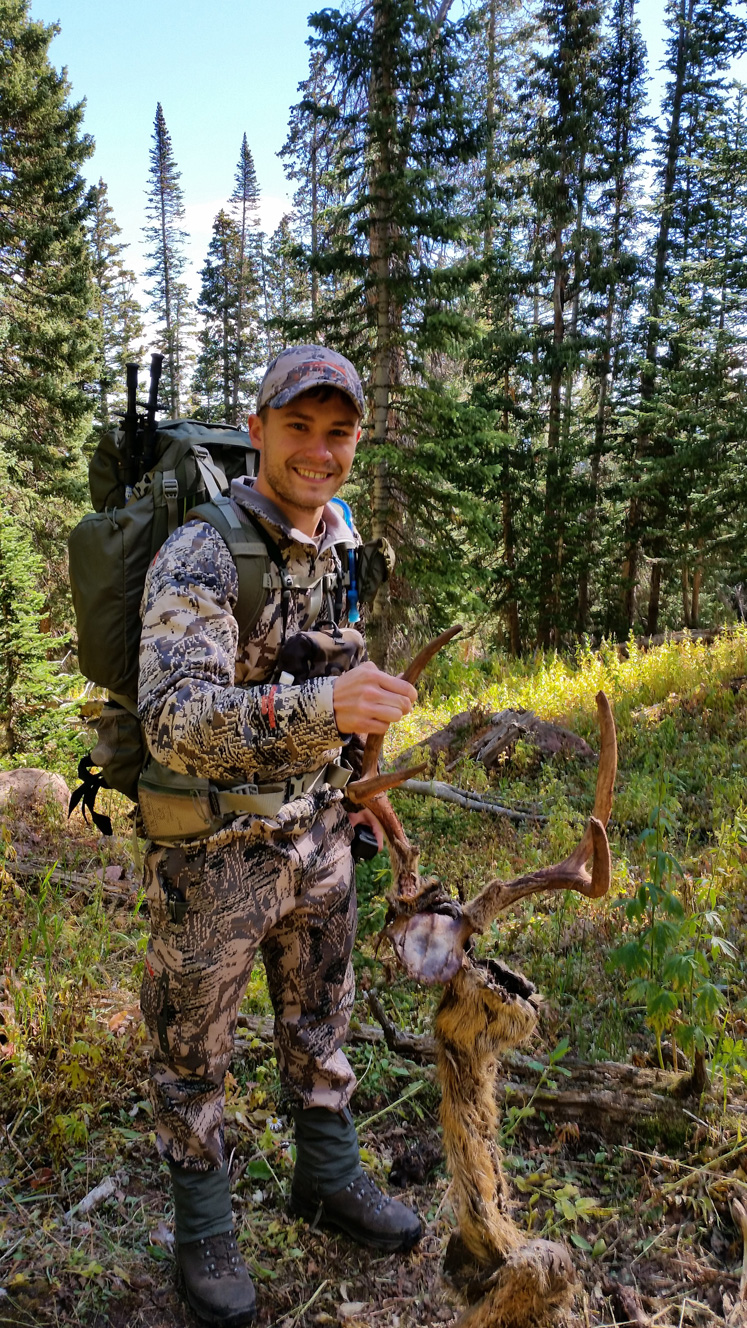
Around 3 am, I awoke to the sound of bugles lighting up in the valley to the north of camp. There were three bulls sounding off in what sounded like a rut fest. I laid there praying for daylight to come. Although the elk sounded close, we had quite the trek to get to them. We skipped breakfast and headed off the mountain to chase the bugles. By first light we were in the action and closer to the bulls than we thought. A clear blue mountain lake was all that separated the three of us from a big 6×6, and a 5×5, with 2 cows. The cows spotted us and disappeared into the timber.
Without hesitation, my brother let out a loud bugle. The bulls immediately fired back, at which time my brother cut them off with a challenge bugle. These bulls were then seriously pissed. We sprinted around the lake, trying to close ground keeping the wind in the right direction. The bulls continued to bugle but would not leave their cows on the bench above us. We climbed up to their elevation and tried sneaking in on the same level. Within about 60 yards of the two bulls, I felt the wind hit me in the back of the neck. Game over. The elk never made another peep and disappeared as if they were never there.
The next morning we were off up the mountain again to where the elk were the morning prior. We moved camp closer, which allowed us to get there by first light. The elk were there, but higher up on the mountain than we imagined for the middle of September–in a grassy meadow at 12,000 feet. We immediately cut any unnecessary weight out of our packs and climbed more than 1,000 near-vertical feet to get to a place where we could make a move ahead of the herd. Once again, we were not able to get in position; the elk had a cliff directly above them, and the wind was wrong for moving any closer. They disappeared over the crest of the mountain by the time the wind cooperated with us.
Back down the mountain we went to get to a good glassing point overlooking the grassy meadow they were in that morning. Little did I know until we were at the bottom, I had left my rangefinder at the top…
Back up the mountain we went! Kurt and Mason were not very happy with my forgetfulness. We spent the remainder of the day resting next to the mountain lake, catching up on some much needed rest, and glassing the high country. Hiking back to camp after dark and lighting up a fire gave a critical attitude boost and seemed to bring our minds some peace.
Storms thrashed the trees and our tents all night, making for restless sleep. A couple hours before daylight, I could hear Kurt’s stove fire up in the tent next to mine making some coffee to kick start another day. With camp on our back, we hiked up and over into the next drainage in search of a rut-crazy bull.
Day six began by glassing some of the high country meadows and listening for bugles. With no vocal bulls, we took off into the drainage and hoped to call in a bull in the timber. Keeping the wind in our face, we circled around the tree line until we were on the opposite side of the drainage. From there we found an extremely muddy pond with a large amount of elk tracks on its banks. Realizing that there was a heavy trail heading up over into another drainage that we had not explored yet, we were quickly climbing up and over 12,000 feet. At the top, we were rewarded with one of the most scenic views I have ever seen. We sat there for 15 minutes just taking it in, and realizing how small we truly were in this vast wilderness. After a few series of bugles with no response, we headed back down to go in a completely opposite direction for the last day of the trip.
Leaving the tent on the last morning to give it our all on our last chance at killing an elk on this trip was bittersweet. I was beat down mentally, and physically, but didn’t want to leave this place. We left nothing on the table that last day, and covered a lot of ground. We heard one last bugle, and went after it, but the bull went silent.
Hiking back to the truck made me realize that although we didn’t come out with a pack full of meat, we were still successful. We were the first ones in our family to ever venture out west to do a completely DIY hunt, and we were able to find elk in one of the most remote places in Colorado. We had just spent seven days in the wilderness, hiked a total of 58 miles, covered 15,000 feet of elevation gain, and found elk on five out of the seven days on public land in an over-the-counter unit. Besides a couple of mule deer hunters with llamas, we did not run into any other hunters in this steep, rugged terrain. On the hike back to the truck, our thoughts turned to warm showers and cold beer.
A trip like this is what most hunters only dream about in our home state of Pennsylvania, but we made it a reality. This may have been my first trip out west to chase big game, but it most certainly won’t be my last. 2017 will be the year that I finish what I started, and come home with a couple of coolers full of meat, a sore back, and a smile that can’t be wiped off.


